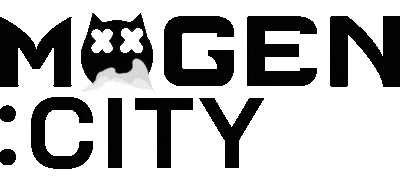Intro: From Rugpulls to Rebirth
After years of scandals, liquidations, and regulatory beatdowns, it was easy to think crypto’s soul had flatlined.
FTX detonated like a dirty bomb over the entire industry. DeFi degens turned into cynical shitcoin tourists. NFTs became the punchline of art Twitter. “WAGMI” felt like the ghost of a meme nobody believed in anymore.
But in 2025? Something’s shifting.
The markets are back. The tech is maturing. And—surprisingly—so is the mood. Amid the chaos and cash grabs, a quiet resurgence of idealism is bubbling up across the blockchain space. People are building again. Talking about purpose. Daring to care.
Crypto is dreaming again. And this time, it’s dreaming with context.
1. The Vibe Shift: From Casino to Cause
Call it a course correction.
After 2022–2023’s carnage, surviving builders aren’t just trying to make money — they’re trying to make meaning. We’re seeing new protocols, communities, and tools emerge with real-world use cases and intentional values. Projects are prioritizing transparency, ownership, coordination, and digital rights.
Here’s what’s changed:
- Less focus on short-term pumps
- More talk about shared infrastructure
- A resurgence in DAOs, public goods, decentralized ID, and community funding models
Platforms like Gitcoin and Zora are spearheading what some are calling the “regen crypto” era — a reaction against extractive systems that defined the last bull run.
2. Builders Are Tired of the Grift
Inside Telegram chats and dev discords, there’s a vibe you can’t chart on TradingView: intentionality.
“I’m done building tools for whales and VC games,” says one pseudonymous dev on the Ethereum mainnet. “If the next cycle doesn’t solve for humans, it’s just rinse and rug again.”
We’ve seen:
- A renewed focus on UX for non-crypto natives
- Open-source platforms replacing “VC Ponzi” culture
- Fewer anonymous token launches, more doxxed accountability
It’s a rejection of the nihilism that crept into the space post-LUNA, post-FTX. This time, some devs are holding themselves — and each other — to a higher standard.
3. The Return of the Why
Crypto’s original ethos wasn’t about memecoins or flipping JPEGs. It was about sovereignty, privacy, and coordination. It was about building tools that let people opt out of rigged financial systems and oppressive institutions.
That spirit is making a comeback.
New projects are tackling:
- Decentralized science (DeSci) – giving researchers tools to fund and share studies without centralized gatekeeping
- On-chain journalism – using blockchain to verify and distribute news in censorship-heavy regions
- Mutual aid protocols – community-governed funding networks for real-world impact
It’s not just tech. It’s values-driven experimentation with real stakes.
4. Younger Builders = Cleaner Slates
The new wave of devs? They weren’t around for the ICO madness or DeFi summer. They’re not jaded by Mt. Gox or scarred by 3AC.
They’re younger. More diverse. More likely to cite mutual aid, climate justice, and data sovereignty as motivators.
In Zuzalu, ETHGlobal, and hacker houses around the world, the conversations sound more like activist roundtables than tech demos.
They’re asking:
- How do we fix governance?
- What’s worth decentralizing?
- Can we create coordination systems that outlast hype cycles?
And then? They’re shipping code.
5. Institutions Are Coming (Again), But Differently
Even institutional players seem to be catching the idealism bug — or at least trying to fake it convincingly.
- BlackRock’s tokenization platform now includes “green bonds” with traceable impact metrics.
- The World Bank is experimenting with CBDC interoperability and DeFi rails for aid disbursement.
- TradFi conferences feature panels on “ethical AI meets blockchain governance.”
Sure, a lot of it is marketing. But it reflects a shift in narrative: crypto isn’t just “shadow finance” anymore — it’s being positioned as a layer for accountability, auditable impact, and open systems.
6. Idealism Doesn’t Mean Ignoring the Past
Let’s be clear: crypto’s baggage didn’t disappear. Scammers still scam. Chains still crash. Memecoins still moon and implode in 24 hours.
But unlike the naive utopianism of 2017 or the techno-anarchy of 2021, 2025’s idealism feels different. It’s:
- Earned
- Informed
- Slightly bruised, but not broken
Builders aren’t pretending the space is perfect. They’re building in spite of it.
This is optimism with scars — and that’s a powerful thing.
Conclusion: Dream Big, But Build Better
Crypto has always been a place where weird ideas can take root. But only occasionally has it been a place where those ideas are followed through, refined, and scaled with intention.
Now, in 2025, we might finally be entering a chapter where idealism and realism coexist.
Not because crypto is fixed — but because enough people still believe it’s worth trying to fix.
And that might be the most bullish signal of all.
Crypto Idealism Returns: Why Dreaming Big Is Cool Again in 2025
The content, Crypto Idealism Returns: Why Dreaming Big Is Cool Again in 2025, published on Mugen:City is for informational and entertainment purposes only.
We do not offer financial advice, investment recommendations, or trading strategies.
Cryptocurrencies, NFTs, and related assets are highly volatile and risky — always DYOR (do your own research) and consult with a professional advisor before making any financial decisions.
Mugen:City, its writers, and affiliates are not responsible for any losses, damages, or financial consequences resulting from your actions.
You are fully responsible for your own moves in the degen world. Stay sharp, stay rebellious.





